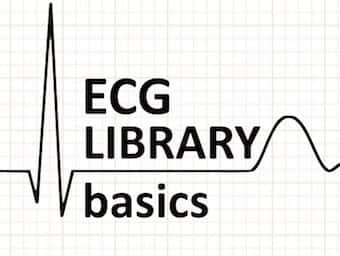
Heart HQ: Atrial fibrillation
Heart HQ - Episode 19: Atrial fibrillation, the most common cardiac arrhythmia that we see in our patients. In this podcast, we explain the different types of AF

Heart HQ - Episode 19: Atrial fibrillation, the most common cardiac arrhythmia that we see in our patients. In this podcast, we explain the different types of AF

A woman in her 60s with a broad complex tachycardia. There are two ECG features that suggest an accessory pathway, can you spot them?

In patients with AF and pre-excitation, the presence of an accessory pathway allows for rapid AV conduction, with a risk of degeneration into VT and VF

EKG differential diagnosis. Differentials based on specific ECG findings. Book: ECGs for the Emergency Physician 1 and 2; LITFL ECG Library

A teenager in atrial fibrillation with a worrying family history. A very unusual looking ECG with Familial Fibrillation... congenital SQTS

Atrial fibrillation is an irregularly irregular tachydysrhythmia characterised by the presence of chaotic fibrillation waves on ECG, rather than p waves, due to disorganised electrical activity in the atria.

Atrial fibrillation (AF) is the most common sustained dysrhythmia and is characterised by disorganised atrial electrical activity and contraction resulting in an "irregularly irregular" ventricular response ("fibrillation waves")

Ashman phenomenon (1947) aberrant ventricular conduction, usually of RBBB morphology, which follows a short RR interval and preceeded by a relatively prolonged RR interval.

Elderly patient presenting with nausea and palpitations. Interpret the ECG. atrial flutter with variable block

20-year old female presenting with palpitations and presyncope, BP 75/50. Describe and interpret this ECG. LITFL Top 100 ECG

Hyperthyroidism and the most common ECG changes seen with thyrotoxicosis including Sinus tachycardia, AF and High left-ventricular voltage

Atrial Fibrillation (AF) is the most common sustained arrhythmia. Lifetime risk over the age of 40 years is ~25%. ashman phenomenon